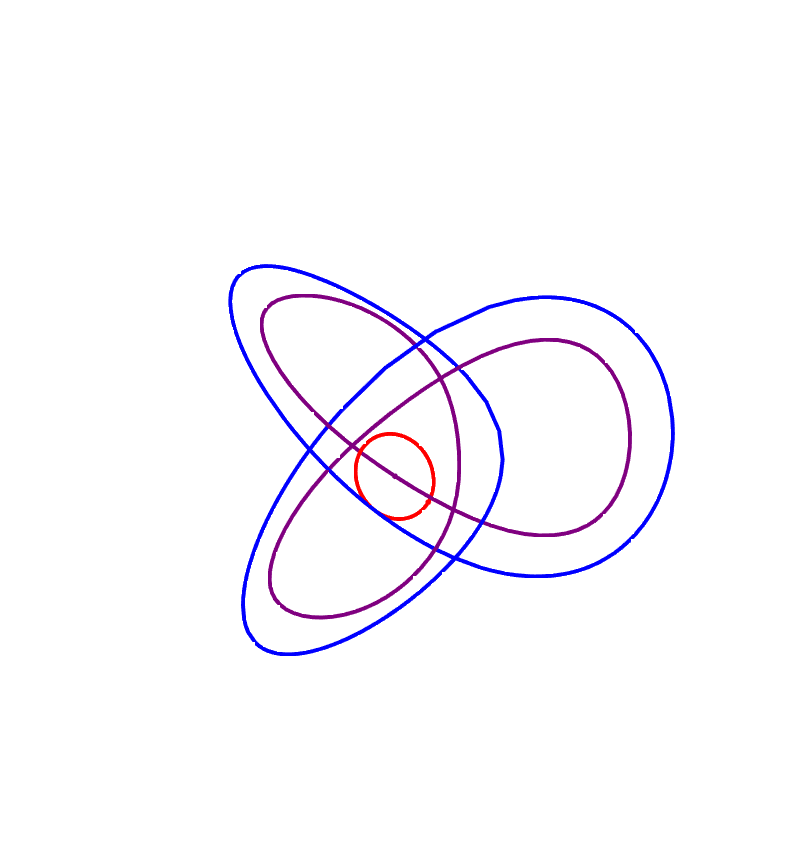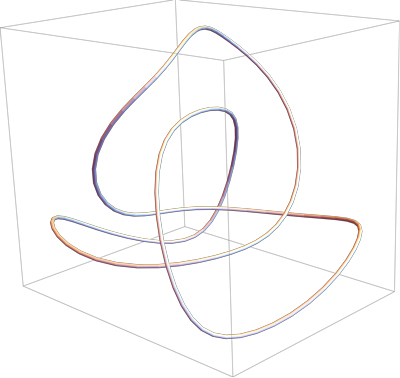Let $K$ be a knot, and $K(t)$ a parametrization of a space curve that realizes $K$. Roll a wheel $W$ of radius $r$ on $K(t)$ so that $W$ remains in the tangent-normal plane. Now track the wheel's center $c(t)$. Call $c(t)$ a unicycle knot. See the crude animation below, where $K$ (blue) is a trefoil knot, as is $c(t)$ (purple).
(Animation code based on that of ubpdqn.)
Increasing the radius of $W$ by a factor of $10$ creates this $c(t)$, which is still a trefoil:
Q. For a knot $K$ realized as a space curve $K(t)$, is every unicycle knot $c(t)$ for all radii topologically the same knot as $K$? If not, what is the range of possibly different unicycle knots for a given $K(t)$? In particular, does every $K(t)$ have a unicycle unknot?


